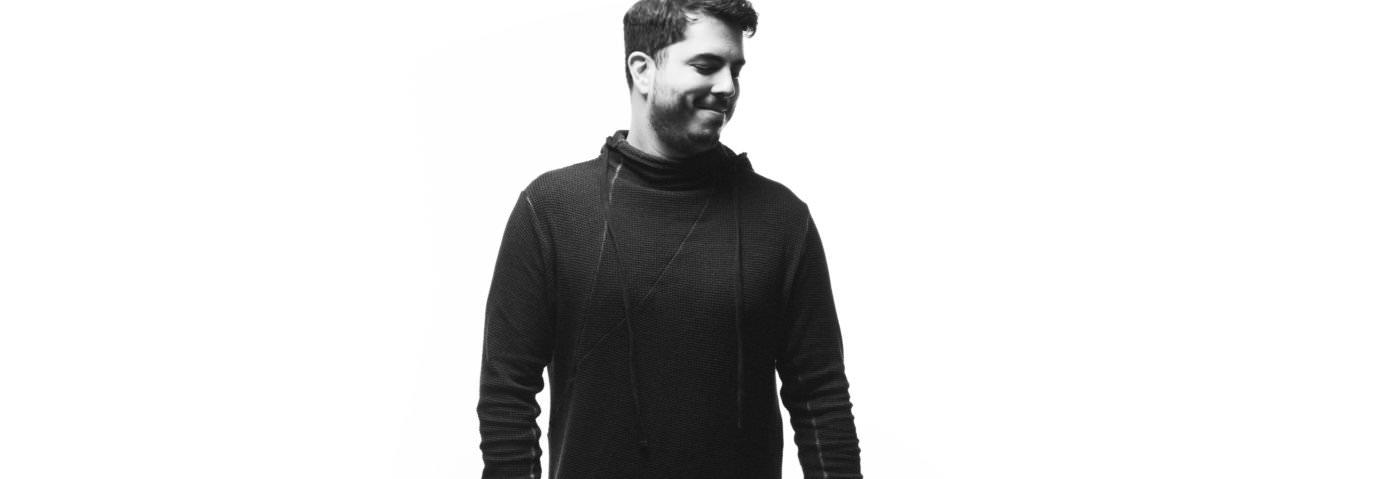He’s spent a decade and a half releasing precisely-engineered techno and electronica and he’s just dropped his third artist album on Drumcode, ‘Straight Lines and Sharp Corners’. We thought it was a good time to chat to Wehbba about his studio.
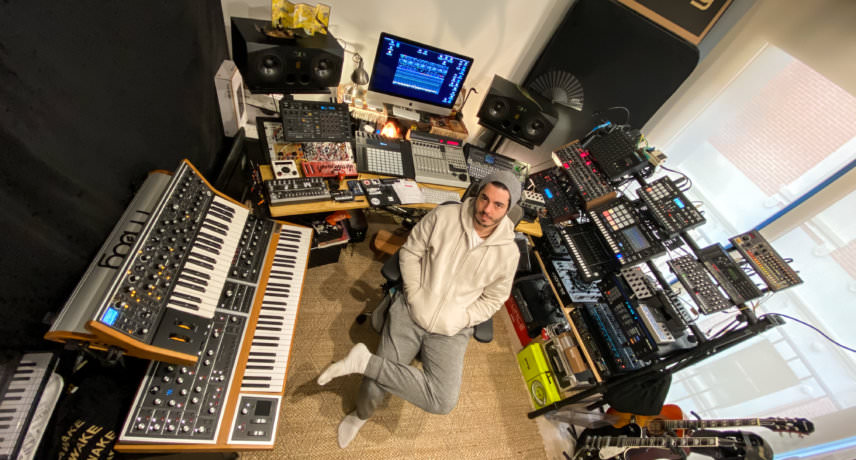
WEHBBA
My studio is located in my apartment in Barcelona. I’ve moved four times in the past ten years, not only apartments but countries and even continents, so I’ve decided to keep my studio at home and not invest a whole lot in acoustic treatment and sound-proofing. I like to have it all very close to me, so I can move quickly from one section to the other, without interrupting my creative process. I’ve also opted for a modular approach, with separate stands for synths, speakers, main station, keyboards, so that I can move things more easily when I need, and I’m not stuck to one layout. It’s usually messy, which means it gets used A LOT.
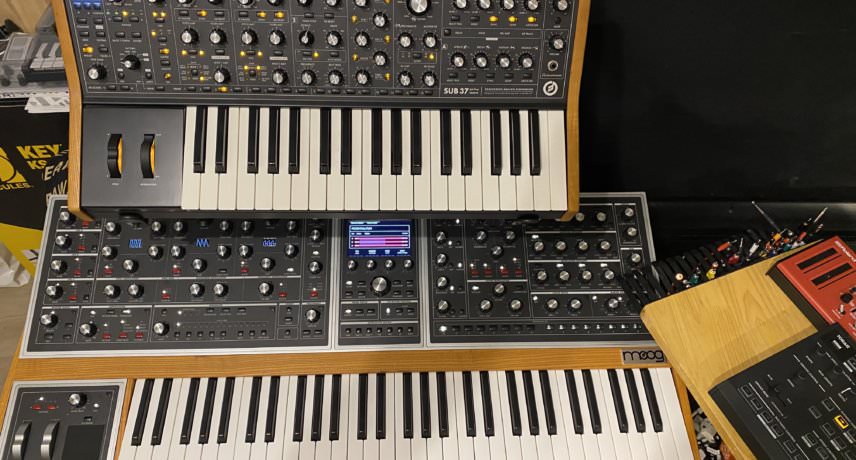


MOOG ONE AND MOOG SUB 37
These are the only keyboards right now in my studio, and they control all of the other synths, I’ve been having a great time using the sequencer from the ONE, but I have to say I’m not a big fan of how the keys feel in neither of these. Might need to pick up a controller at some point. Sound-wise, it’s tough to get more ominous than this. You can hear the ONE on ‘Prelude: Goya‘, the intro of my last album, with the arpeggios and the big bass, and the SUB 37 is used for the distorted riff on ‘Deluge’, also from ‘Straight Lines & Sharp Corners’.
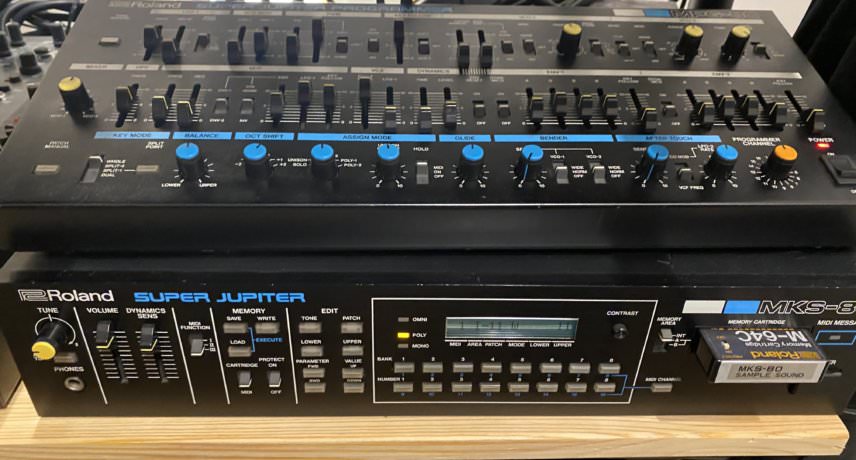


ROLAND MKS-80 SUPER JUPITER
Speaking of ominous, this beast from 1985 is like the lovechild of a Jupiter-6 and a Jupiter-8, and it’s a hard one to tame. It makes incredibly large sounds, and has such a clever design that is really inspiring to tweak, and pretty difficult to make it sound bad. You can hear the classic sound from it on ‘Brainflex: Interlude’ on my last album, doing the fat bass hook that comes in at 45 sec, or on pad duties on ’14th To Grand Central’, all throughout the track.
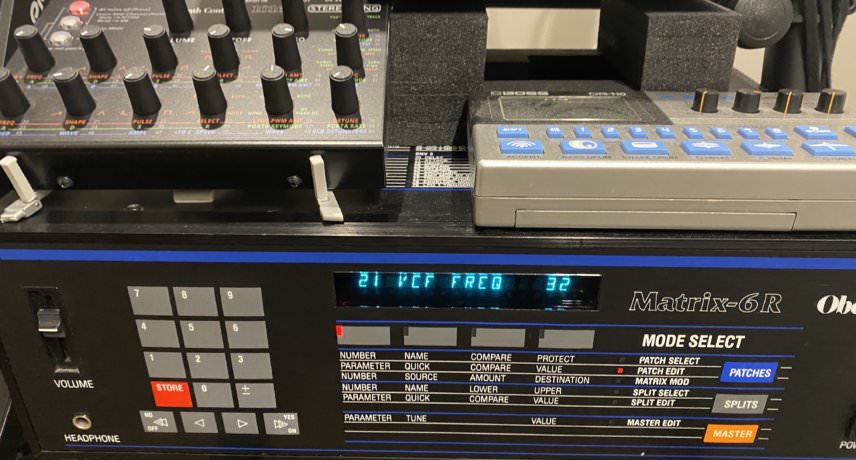


OBERHEIM MATRIX 6R
Also from the 80s, this is another one of my favourites, it’s really lush and also really easy to fit in any track. I’ve got this little controller for it from Stereoping, which makes it a lot easier to program, and now I use it a lot more since I can record my performances changing the parameters in real-time. Also used it extensively on all the pads for ‘Brainflex: Interlude‘ and ‘Digital Sunset‘, for example.



EURORACK MODULAR SYSTEM
Moving up a few eras, this is part of a small system I have, I just really love the purity of the sound that comes from it, it’s so crisp and edgy, and it’s also really inspiring to work with. Every day it turns into a completely new synth, I don’t think I’ve ever used it the same way in more than one session. The main hook on ‘Deluge‘ comes from tweaking the amplitude modulation on the Furthrrr Generator module, going through the Rossum Evolution filter
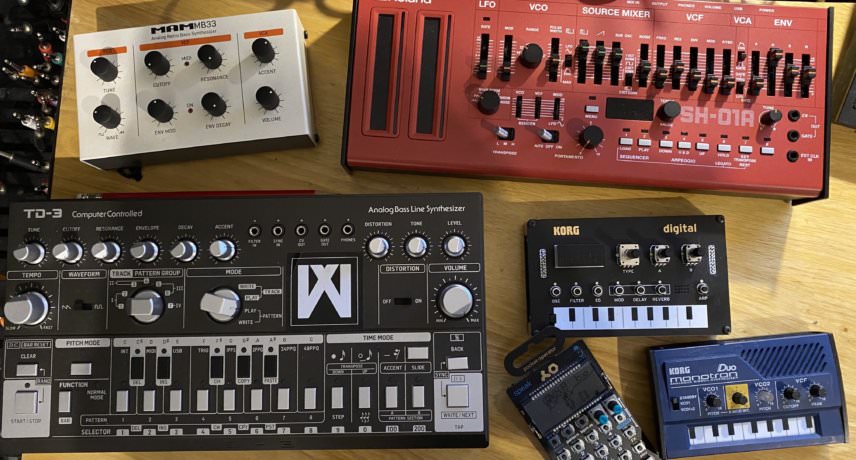


PLUG & PLAY SYNTHS
These are a few synths I use quite a lot on rotation, some of them are also a part of my ‘Live Station’ rig. Can’t have enough 303 clones, so here are two of my favourites, from Behringer and from MAM (as featured on ‘Second Nature’ and ‘Coup Of Doubt’ on my album). Also I love the small stuff from Korg, such fun and great sounding little boxes! Same goes for the PO35, with its quirky vocoder and great drum sequencer. I’ve used these quite a lot on ‘Hyper Real Decadence’. And last but definitely not least, the Roland Boutique SH01A gets used in 99% of my tracks, together with the Atlantis from the Eurorack system, to cover my 101 needs (mind you, I need lots of it).
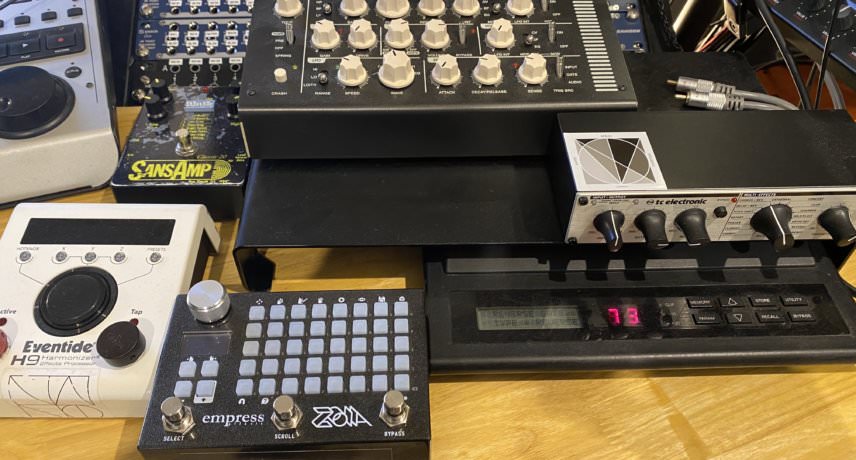


PLUG & PLAY EFFECTS
Also on rotation, I keep some guitar pedals and desktop boxes. I connect them in my patch bay and usually print their sound with the source on the way in. I like commitment. The Sansamp is great for distortion, especially to warm up drums and to distort acid lines. The H9 and the Zoia are good for just about every single thing. Really. Then the M100 and the Yamaha REX50 are awesome vibe boxes that are great for more old-school effects. And lastly The Retroverb Lancet, one of my most rewarding and craziest effects, with amazing distortion, filter, spring reverb and lots of modulation possibilities.
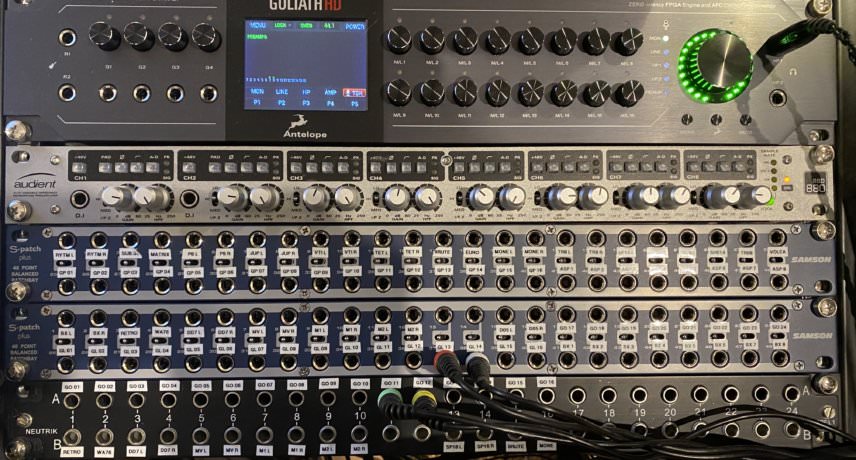


ANTELOPE GOLIATH HD, AUDIENT ASP880, PATCHBAYS
This is the centrepiece of my studio, everything goes through here. I love the preamps and the crisp sound on the Goliath, and also their amazing plugins, but I also like to mix and match with the tone from the Audient preamp, which has great, clean high-pass filters. All of the plug & play stuff on the previous pictures get routed and connected here on the patch bays. Apart from that, I keep them in half-normalled settings so that I don’t need cables to connect every single thing.
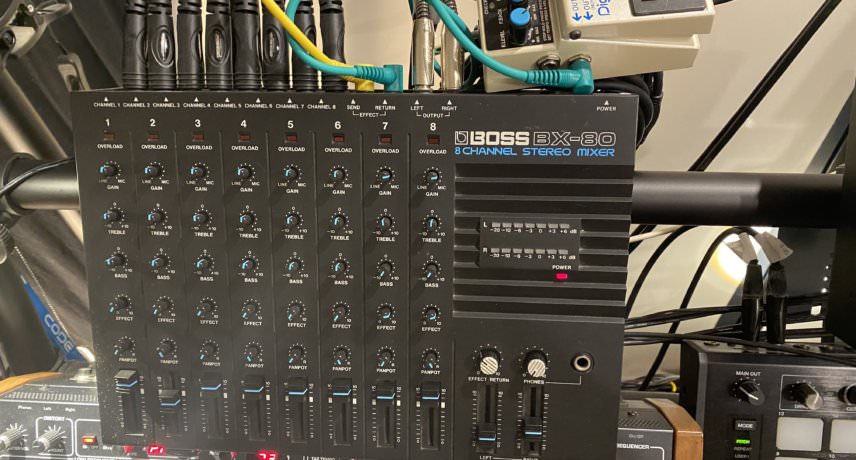


BOSS BX-80
I love this little old mixer from Boss/Roland, it’s my go-to for running most of my drums, and I’ve paired it with the DD7 to create some really interesting grooves. You can hear it running the full mix down on ‘Brainflex: Interlude’ and “No Sleep”, for example, but it’s been used in most of my productions for the past three years.
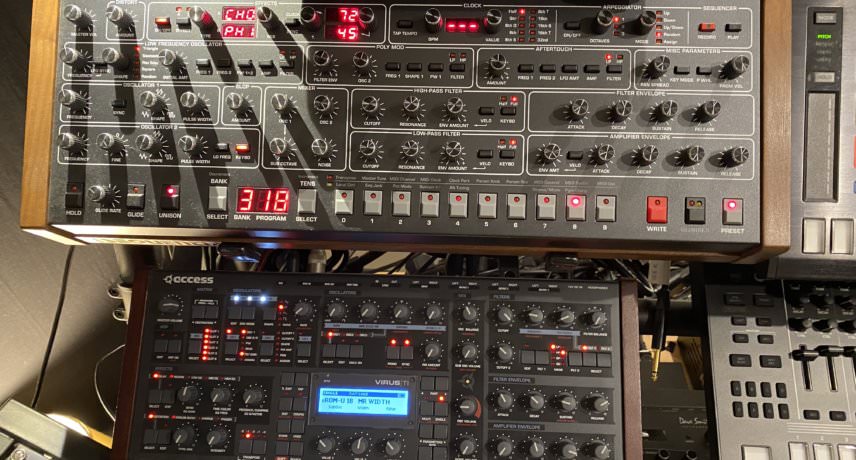


SEQUENTIAL PROPHET 6 & ACCESS VIRUS TI
Two of my favourite and most used synths. You can do pretty much anything with the Virus, like the beautiful pad on ‘Coup Of Doubt‘, for example, and I’ve also used it for the bassline and the hoovers on ‘Basic Pleasure’, while the trippy sequence on that track comes from the Prophet. You can create both modern and vintage sounds with the Prophet, and it’s also very hard to make it sound bad. The Virus was my first hardware synth, I’ve had it for around eleven years now.
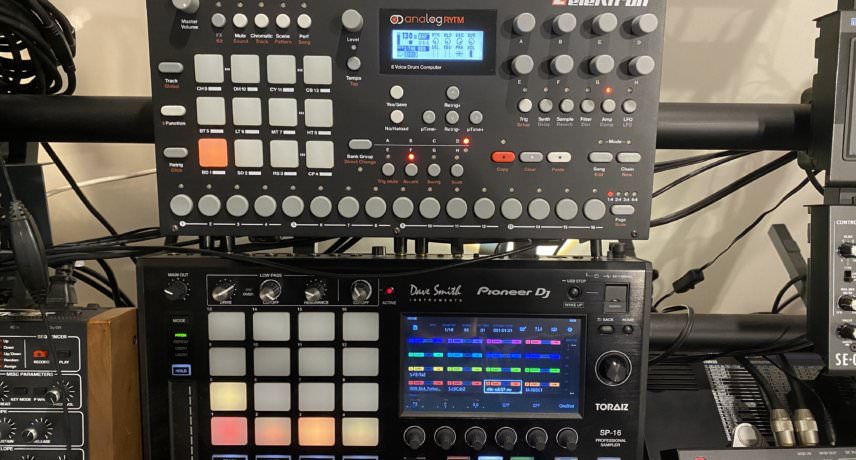


ELEKTRON ANALOG RYTM & PIONEER DJ TORAIZ SP-16
These, together with my Roland TR8s (off picture) are my main drum sources. I use the SP-16 to process lots of other sounds with the stereo analogue filter, like the choir pad sounds on ‘Dove Rush’ or the stabs on ‘No Sleep’. I create most of my kick drums on the Rytm, and I also love the toms (also used extensively on ‘Dove Rush’ and ‘Hyper Real Decadence’) and hi-hats.
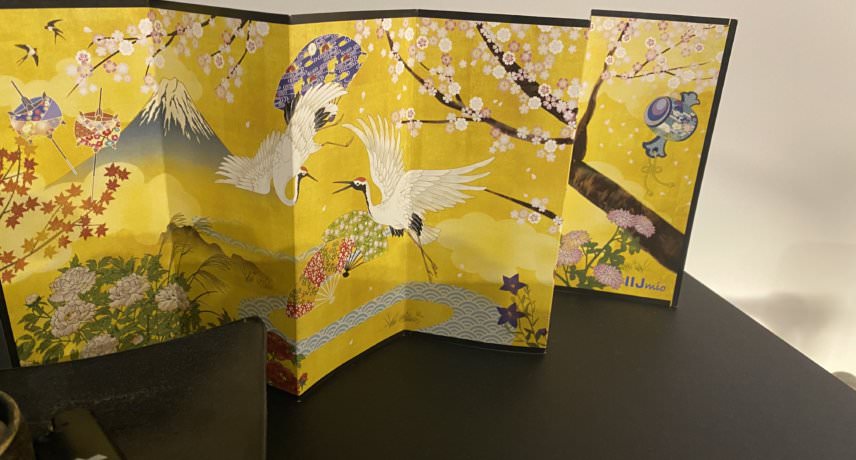


JAPANESE FOLDING SCREEN
This piece actually came with a sim card I bought in Tokyo, that was the packaging! Gotta love Japan! I’ve kept it on top of my right speaker for the past three years, and it became an integral part of the studio. It helps to fill the room with good vibes and it’s always soothing to look at it when the work gets too intense.
Straight Lines and Sharp Corners is out now on Drumcode.
